When fruit and vegetables are in season, prices are low and there may be too much produce for a household to eat before it over-ripens and spoils. Fresh fish and meat are also quick to spoil if they are not kept cool enough.
Tools and guides
Food preservation
Preserving fresh food reduces waste and means it can be kept for longer
2023
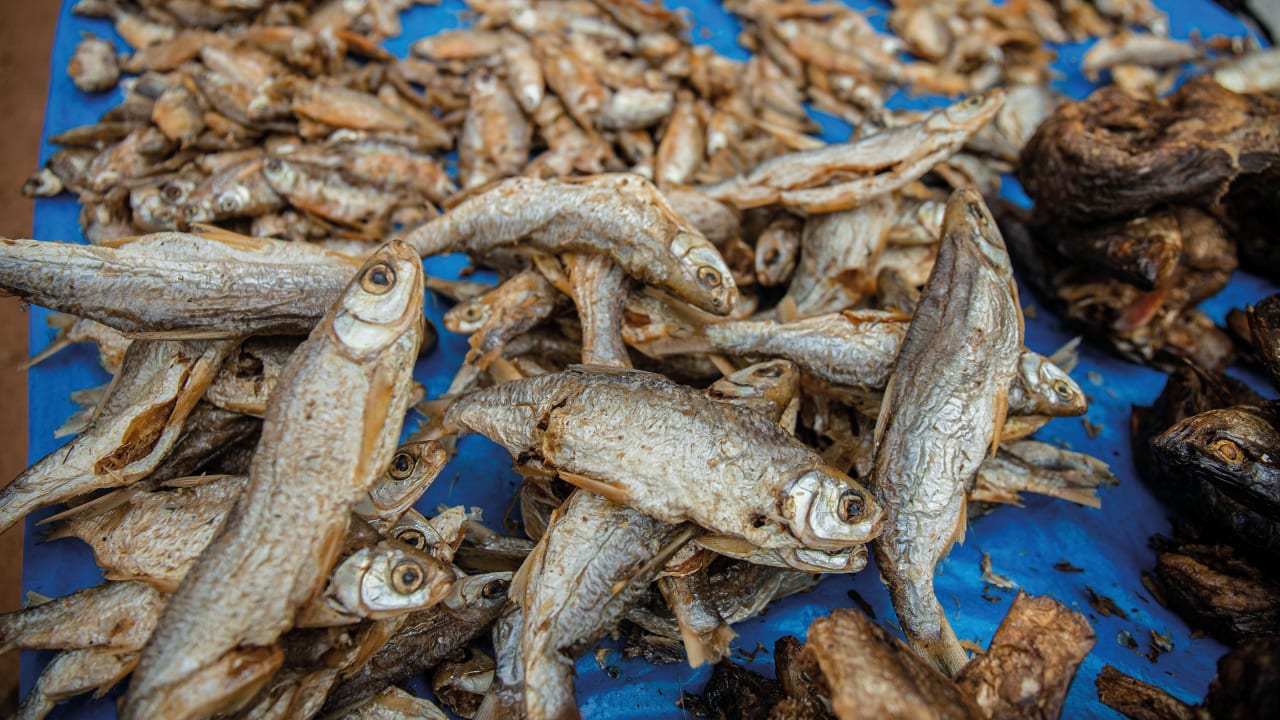
Dried fish in Côte d’Ivoire. Photo: Jonas Yameogo/Tearfund

From: Food and nutrition – Footsteps 119
How to eat well, address malnutrition and reduce food waste
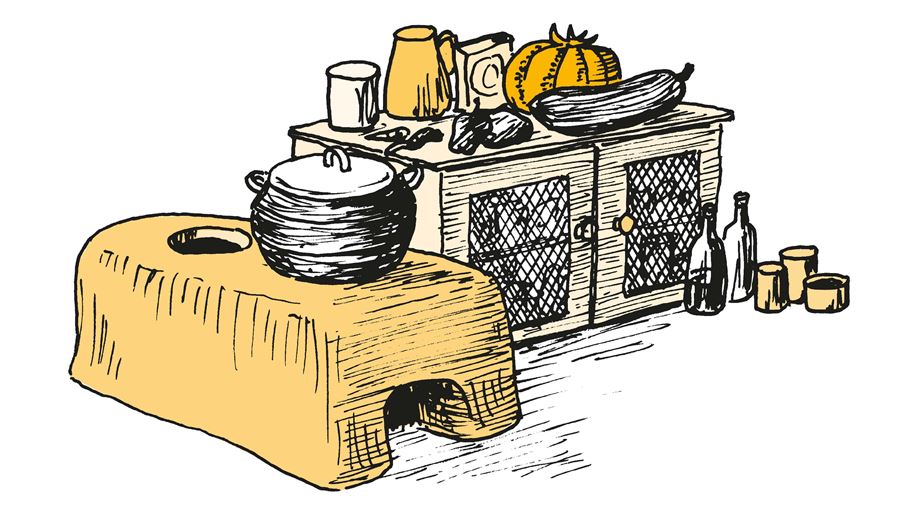

Preserving fresh food reduces waste and means that it can be kept for longer
Pickles and chutneys
Pickles and chutneys made out of fruit and vegetables can add flavour and nutrition when eaten with staple foods. Chutneys are usually sweeter than pickles, and less spicy.
Foods such as tomatoes (red or green), onions, carrots, green mangoes, papaya, green beans and pumpkins all make good chutneys and pickles.
Chutney recipe
- Ten cups of washed, chopped fruits and vegetables cut into small pieces (use a mixture of several types)
- One to two cups of chopped onion
- Three cups of vinegar
- Three cups of sugar
- Three teaspoons each of ground ginger, mustard seeds, cinnamon or other similar spices
- Salt and pepper
- Sterilise some jars. Wash them in hot, soapy water, rinse clean and put them to dry in a warm oven (120 degrees Celsius) or in hot sunshine. Protect them from flies and dust. Put the lids and any rubber seals in a pan of boiling water for two minutes.
- Boil the ingredients in a large pan for 30–50 minutes, stirring regularly. Add a small amount of water if needed.
- Cool a little and pour into the sterilised jars, first wrapping each jar in a damp cloth to prevent it from cracking. Use undamaged lids.
For pickles add the same amount of vinegar (three cups) but just one to two cups of sugar and plenty of chilli, mustard seeds and other available spices.
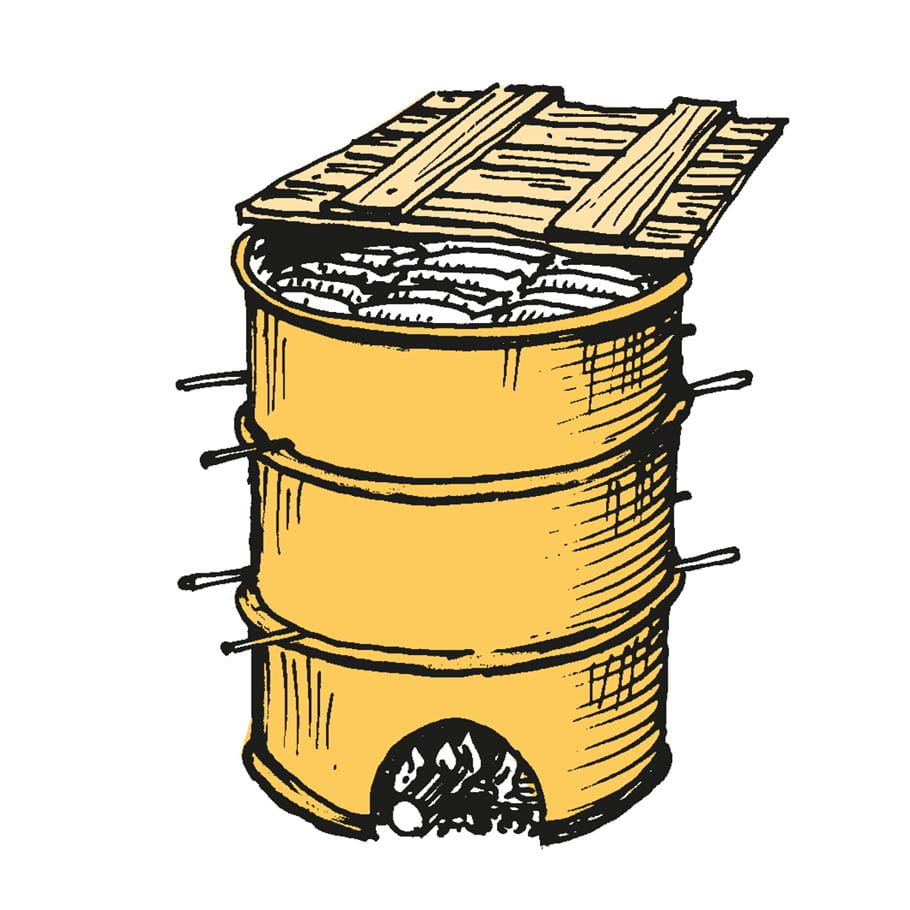

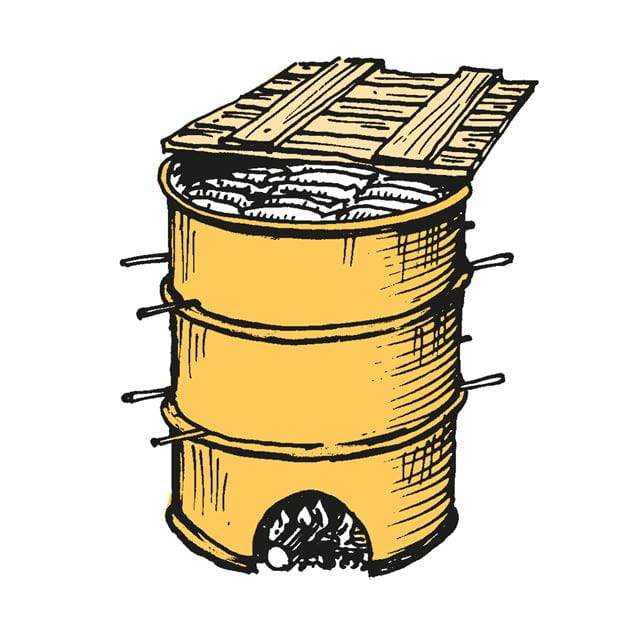

Top Fish can be smoked in an oil drum cut into three sections, with handles to lift each section Bottom Use wooden or metal trays to smoke fish above a kiln made from brick or mud
Smoked fish
Smoking cooks and dries the fish at the same time. Smokers have different designs but all require a source of smoke and somewhere for the fish to be hung or placed in trays.
Simple kilns can be made out of oil drums or built using brick or mud walls. To ensure a good flow of air through the smoker there needs to be an entrance for air at the bottom, and an exit at the top.
Before smoking, split large fish to remove the guts and large bones, and then wash them in clean water.
Move the trays around regularly inside the smoker so all the fish are smoked evenly. Smoking usually takes between 14 and 24 hours.
Different types of wood give different flavours to the fish, so try out a variety to decide which type you prefer. Meat can be smoked in the same way after cutting it into thin strips.
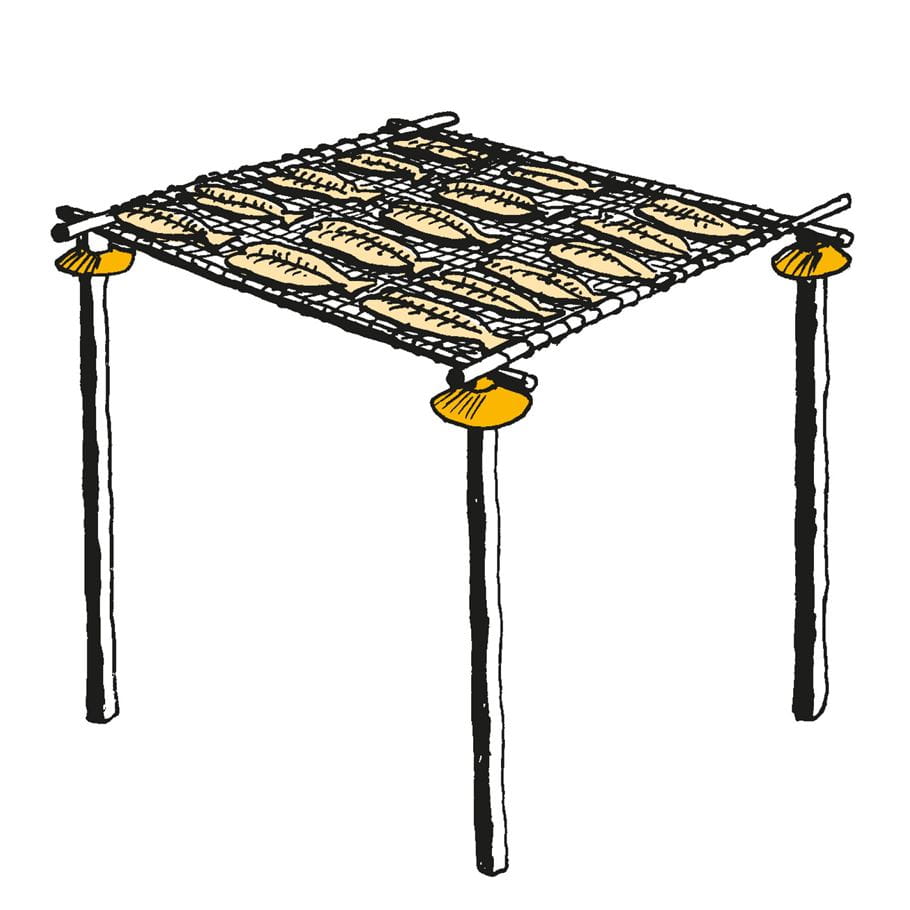
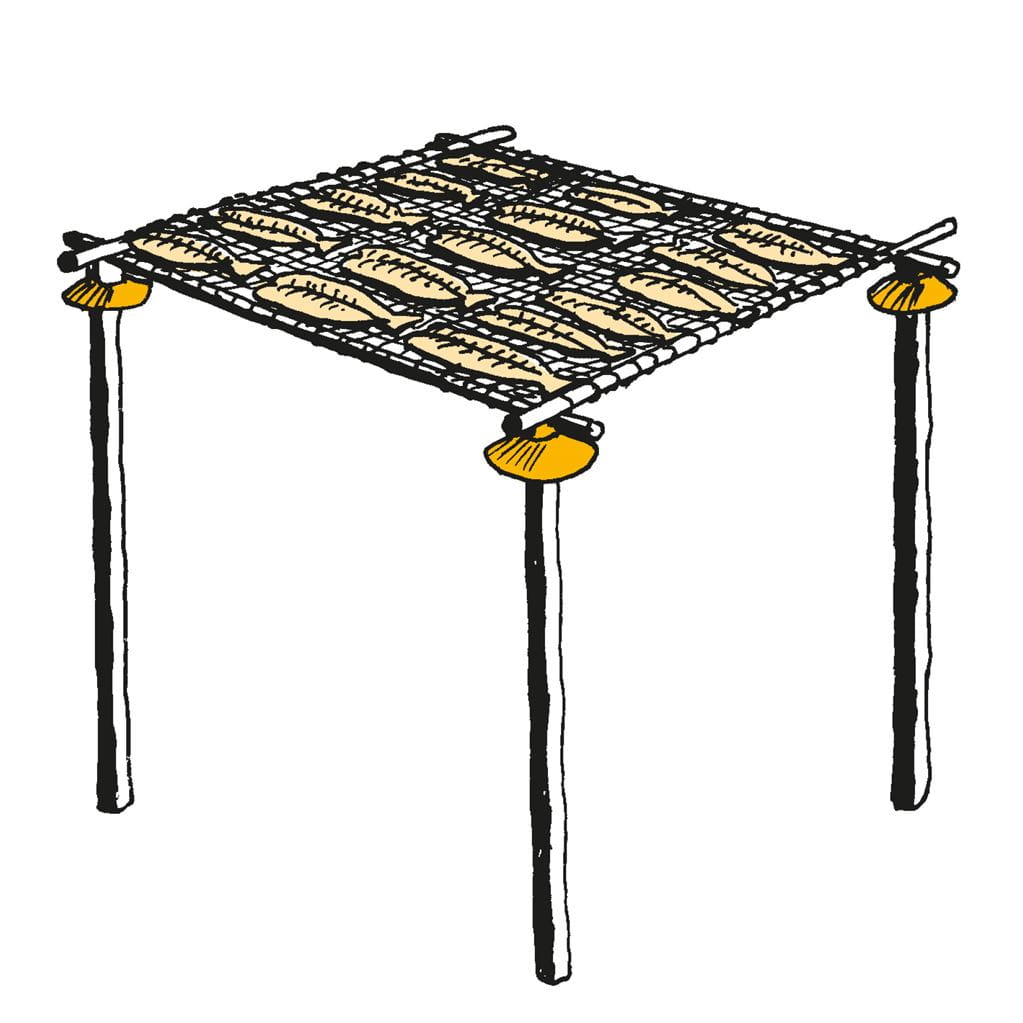
Dry fish on a platform more than one metre above the ground to prevent mice and rats jumping onto it. Add rings made from tin cans to stop rodents climbing up.
Dried fish
Drying is a good way to preserve fish that cannot be eaten or sold while it is still fresh. Drying usually takes two to three days. Oily fish do not dry well.
Remove the guts and bones of large fish by splitting them open, and then clean the fish by washing them carefully in clean water.
Lay or hang the fish on bamboo, grass, wooden or wire racks above the ground to dry in the sun. Protect them from insects, birds and animals (eg by covering them with a net).
If the sun is very hot, it is important not to let the fish get too hard on the first day. It may help to begin drying the fish in the shade. Cover the fish overnight.
When the fish are thoroughly dried, store them in clean plastic or cloth bags. Check them regularly for signs of mould.
Additional resources
- Improving food security - a Pillars guide
By Isabel Carter
Learn about grain banks, natural pest control, food preservation and other topics - Food and livelihoods - Reveal toolkit
How to preserve and prepare food, eat healthily, grow fruit and vegetables and form self-help groups - answers.practicalaction.org
Resources and factsheets on food storage and preservation techniques
Similarly Tagged Content
Share this resource
If you found this resource useful, please share it with others so they can benefit too.

Subscribe to Footsteps magazine
A free digital and print magazine for community development workers. Covering a diverse range of topics, it is published three times a year.
Sign up now - Subscribe to Footsteps magazine




